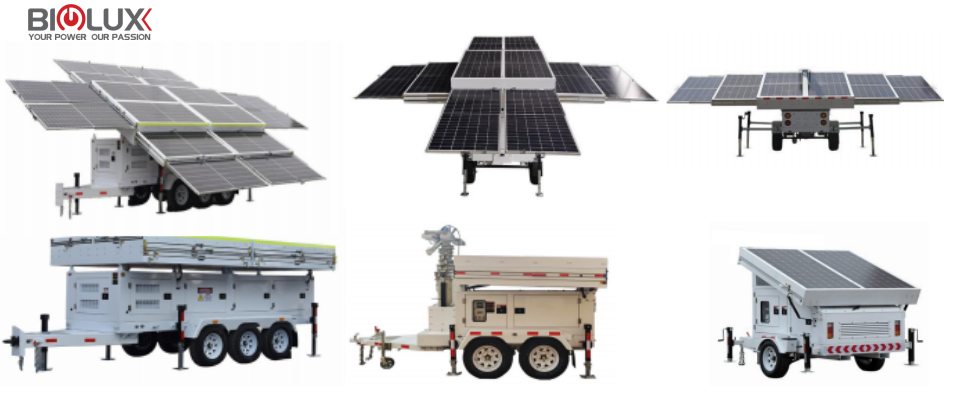how to calculate the running time of a solar generator trailer
introducing 3 steps with one example
what is a solar generator trailer?
Outdoor temporary gasoline or diesel generator sets and solar photovoltaic power stations are likely already familiar to many. Now, imagine combining solar power with these generators and installing them on a trailer chassis to create a mobile energy storage and power supply station. Indeed, we realized this concept several years ago and have since produced a series of mature products, which have been mass-produced and shipped to regions in the Middle East, Europe, and America. During the initial phase of the project, we engage in detailed communication with clients on various aspects, with one of the most pressing concerns for clients being the charging and operating times. Today, let me now walk you through exactly how these are calculated.

how to calculate?
Unlike conventional gensets, our solar trailers do not directly power external devices with the generator. Instead, they first charge the batteries through a charger and then supply power to external devices from the batteries.
Based on this process, the calculation can be divided into three steps:
Step 1, The amount of fuel needed to fully charge the battery once:
Amount of fuel needed once = Battery capacity ÷ Charger current size × Average fuel consumption per hour of the generator.
Step 2, battery charge cycles: Total fuel tank volume÷ Amount of fuel needed once.
Step 3, Calculate how long external devices can operate based on the total battery charge cycles:
battery charge cycles × battery capacity ÷ power consumption of the external device

case study
Let's take an example. We have a client in the Middle East who needs to power the air conditioning for his mobile camp. The air conditioner has a rated power of 2 kW. For simplicity, we'll assume it runs continuously at full power. Taking our ten-panel dual-axis solar power trailer as an example, it's mainly equipped with 10 panels of 460W each and a total battery capacity of 48 kW at 48V.
Without a generator,only relying on the batteries in the trailer, the charging time is 8.8 hours, calculated as (48 kW * 80% DoC) / (460W * 10 * 95% efficiency) = 8.8 hours, and the operating time is 19.2 hours, calculated as 48 kW * 80% DoC / 2 kW = 19.2 hours. This shows that the power supply time is almost twice the charging time, which is generally enough for use if the sunlight is sufficient.
For added assurance, an optional backup generator can also be installed inside. Taking our standard 5 kW diesel generator set as an example, this generator consumes about 1.5L of fuel per hour. If we have two chargers with a charging power of 80A DC48V, the fuel consumption to fully charge the battery once is approximately 48 kW * 0.8 / 80A / 48V * 1.5L = 15L. With a regular tank capacity of 50L, one tank of fuel is enough to charge the battery 3.3 times. Therefore, we can calculate that 3.3 * 48 kW * 0.8 / 2 kW = 63.36 hours, meaning one tank of 50L fuel can sustain the air conditioner running continuously for 63.36 hours.

what else?
Please note that the generator inside our trailer is only for backup and is not intended to run continuously. It is set to start only when the battery charge is low and there is no sunlight to recharge the battery. Therefore, the frequency of starting is not high. Based on experience, one tank of fuel typically lasts about a month because the solar panels can charge the battery most of the time.
This concludes the explanation regarding operating times. If you have any further questions or need clarification, please feel free to leave a message on the right side of this page. We will respond within 24 hours. We welcome all forms of communication and discussion. For other applications of solar trailers, such as mobile lighting or surveillance, and typical use cases, please click on the navigation menu at the top of the page to read more.

Thanks for reading.









